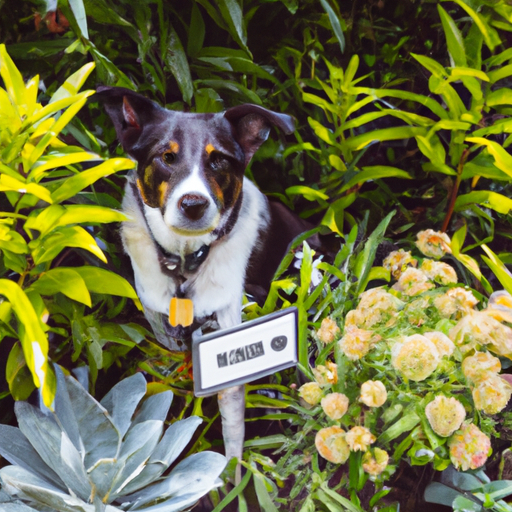As a caregiver for your beloved furry friend, you’ve probably wondered more than once about the safety of the greenery your dog comes in contact with during their outdoor adventures. Or maybe you’re concerned about the houseplants that share your living space. Fear not, this guide is here to illuminate you on five types of plants that are safe for dogs.
1. Spider Plants (Chlorophytum Comosum)
Spider plants, with their long, arching leaves, are a common sight in many homes. They are excellent air purifiers and are non-toxic to dogs. However, their mildly hallucinogenic properties can cause an upset stomach if ingested in large quantities. It’s best to keep them out of your dog’s reach if they have a history of munching on houseplants.
| Spider Plants | Details |
|---|---|
| Care level | Easy |
| Light | Indirect, bright light |
| Toxicity | Non-toxic |
2. Bromeliads
Bromeliads are tropical plants known for their vibrant colors and unique shapes. They’re safe for dogs and can add a splash of color to your home. Bromeliads prefer bright, indirect light and require minimal watering.
| Bromeliads | Details |
|---|---|
| Care level | Moderate |
| Light | Bright, indirect light |
| Toxicity | Non-toxic |
3. Areca Palms
Areca Palms, also known as butterfly palms, are another safe choice for a pet-friendly home. Their lush, feathery leaves can provide a bit of tropical paradise in your living room, and they’re safe for your dog as well.
| Areca Palms | Details |
|---|---|
| Care level | Moderate |
| Light | Bright light |
| Toxicity | Non-toxic |
4. Boston Ferns
Boston ferns are a classic choice for indoor greenery. Their delicate, feathery fronds add softness and a touch of elegance. They’re also completely safe for dogs.
| Boston Ferns | Details |
|---|---|
| Care level | Moderate |
| Light | Indirect, moderate light |
| Toxicity | Non-toxic |
5. Swedish Ivy
Swedish Ivy, despite its name, is neither Swedish nor a true ivy. It’s a beautiful hanging plant with trailing stems and rounded leaves. It’s safe for dogs and quite easy to care for.
| Swedish Ivy | Details |
|---|---|
| Care level | Easy |
| Light | Bright light |
| Toxicity | Non-toxic |
Frequently Asked Questions (FAQs)
Q: What happens if my dog eats a plant that’s not safe?
A: The reaction will depend on the type of plant and the amount consumed. It could range from mild gastrointestinal upset to more severe symptoms like drooling, vomiting, and even difficulty breathing. If you suspect your dog has ingested a toxic plant, contact your vet immediately.
Q: Can dogs be allergic to non-toxic plants?
A: Yes, dogs can have allergic reactions to plants, just like humans. If you notice your dog displaying symptoms like itching, redness, or swelling after contact with a plant, consult with a vet.
Q: How can I train my dog to avoid plants?
A: Training dogs to avoid plants can be challenging, but not impossible. Use positive reinforcement techniques, and consider using pet-friendly deterrents to keep them away from specific plants.
Remember, as a caregiver, knowledge is your ally. By understanding which plants are safe for your dog, you can create a pet-friendly environment that both you and your furry friend can enjoy.



